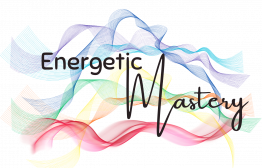Importance of Being at Peace with All Emotions

We, as a society, celebrates happiness and positivity, and emotions such as sadness, anger, and fear are often viewed as bad and hence are unwelcome. From childhood, we are conditioned with these beliefs and programmed to suppress such feelings, truly believing they are “bad” or “inappropriate”; we are not safe to feel them.
Yet, we crave peace and authenticity – and my truth – which was a long time coming! – is in order to live authentically, humans must embrace the full spectrum of emotions.
True happiness is not about avoiding difficult emotions but making peace with them.
Recognising and Allowing Emotions
Emotions are neither good nor bad—they simply are. They are energies in motion. They need to flow. They are part of the natural flow of life, rising and falling like waves. The key to emotional harmony is not to fight or fix your feelings but to recognise them and allow them to exist.
With energetic work, instead of diving into the reasons why a particular emotion has surfaced—an approach that can often feel overwhelming, we focus on how it is presenting itself. You might notice anger as a tightness in your chest or sadness as a heaviness in your stomach. Simply start to acknowledge the feeling and say to yourself, “I see you. You are here, and that’s okay.” Remind yourself that you are safe in this moment, and allow the emotion to flow through you. It really is that simple.
Emotions become overwhelming when we resist them or believe they shouldn’t be there. But when we accept their presence, they lose their intensity.
Sadness, anger, fear—they are all part of being human. They come and they go, and they do not define you.
Breaking Free from Conditioning
Many of us grew up absorbing messages from parents, teachers, or society that certain emotions are unacceptable. We were told to “stop crying,” to “calm down,” or to “be strong.” These well-meaning but misguided lessons teach us to suppress or hide our emotions, creating the belief that sadness, anger, or fear makes us weak or unworthy.
But the truth is, emotions are not weaknesses. They are signals—guiding us to pay attention, process, and release. Anger might arise when a boundary has been crossed. Sadness may appear when it’s time to grieve or let go. These emotions are not obstacles; they are part of life’s natural rhythm. To embrace them is to embrace the wholeness of who you are.
Vital Lesson…..
Happiness is not the absence of sadness or anger but the ability to coexist with them. To feel deeply and allow your emotions to flow without judgment is to live authentically.
Escaping the Victim Mentality
When we resist emotions or allow the emotions of others to dominate us, we risk falling into the victim mentality. This mindset sees life as something that happens to us rather than something we can navigate with awareness and choice.
For example, if someone expresses anger towards you, it’s easy to take it personally, feeling attacked or wronged. This reaction stems from judgment—both of their emotions and your own.
You might think, “Why are they treating me this way?” or, “I shouldn’t feel so upset about this.” In doing so, you hand over your power, allowing their feelings to dictate your state of mind.
The antidote to the victim mentality is self-compassion and awareness. Recognise that the emotions of others are not about you; they are reflections of their own inner experience. You are not responsible for their feelings, just as they are not responsible for yours. By maintaining your emotional centre, you remain grounded and empowered.
When faced with challenging emotions—whether your own or others’—remind yourself: “I am safe. I can allow this to flow without judgment.”
Compassion as a Path to Freedom
Compassion is the key to breaking free from both judgment and the victim mindset. When you show compassion to yourself, you create space to process your emotions without fear or resistance. Instead of viewing anger or sadness as something to fix, you can see them as natural parts of being alive.
Compassion also allows you to approach others with understanding rather than judgment. When someone is angry or upset, it’s easy to react defensively or feel burdened by their energy. But if you view their emotions with compassion, you can see them as expressions of their inner struggle rather than personal attacks. This perspective helps you hold space for others without absorbing their feelings as your own.
Compassion doesn’t mean tolerating harmful behaviour or abandoning your boundaries. It simply means recognising that everyone—yourself included—is navigating their own emotional journey.
When Emotions Feel Overwhelming
Sometimes, emotions carry the weight of unresolved trauma or past experiences. These feelings can feel overwhelming, even paralysing. If you find yourself struggling, know that there is no shame in seeking help. A therapist or counsellor can provide guidance and tools to help you process these emotions safely and effectively.
True Happiness Comes from Wholeness
As I have mentioned, and will keep talking about forever, happiness is not about avoiding sadness, anger, or fear. It is about embracing the wholeness of who you are. To feel joy deeply, you must also be willing to feel sadness. To experience peace, you must allow anger to rise and fall without judgment.
When you make peace with all emotions, you free yourself from the need to control or suppress them. You move through life with greater authenticity, resilience, and inner strength.
A Lifelong Practice
Being at peace with your emotions is not a one-time achievement but an ongoing practice. It requires mindfulness, patience, faith and a willingness to face discomfort. Some days will be easier than others, and that’s okay. The more you practise acceptance, the more natural it becomes to meet your emotions with curiosity and compassion.
In this practice, you reclaim your power. You no longer fall into the victim mentality, allowing emotions to control you or others’ feelings to overwhelm you. Instead, you stand in your truth—acknowledging that emotions are part of life’s flow and that you are capable of navigating them with grace.
True happiness is not about avoiding life’s storms but learning to dance in the rain. By embracing all emotions, you live with a sense of wholeness, freedom, and peace.
